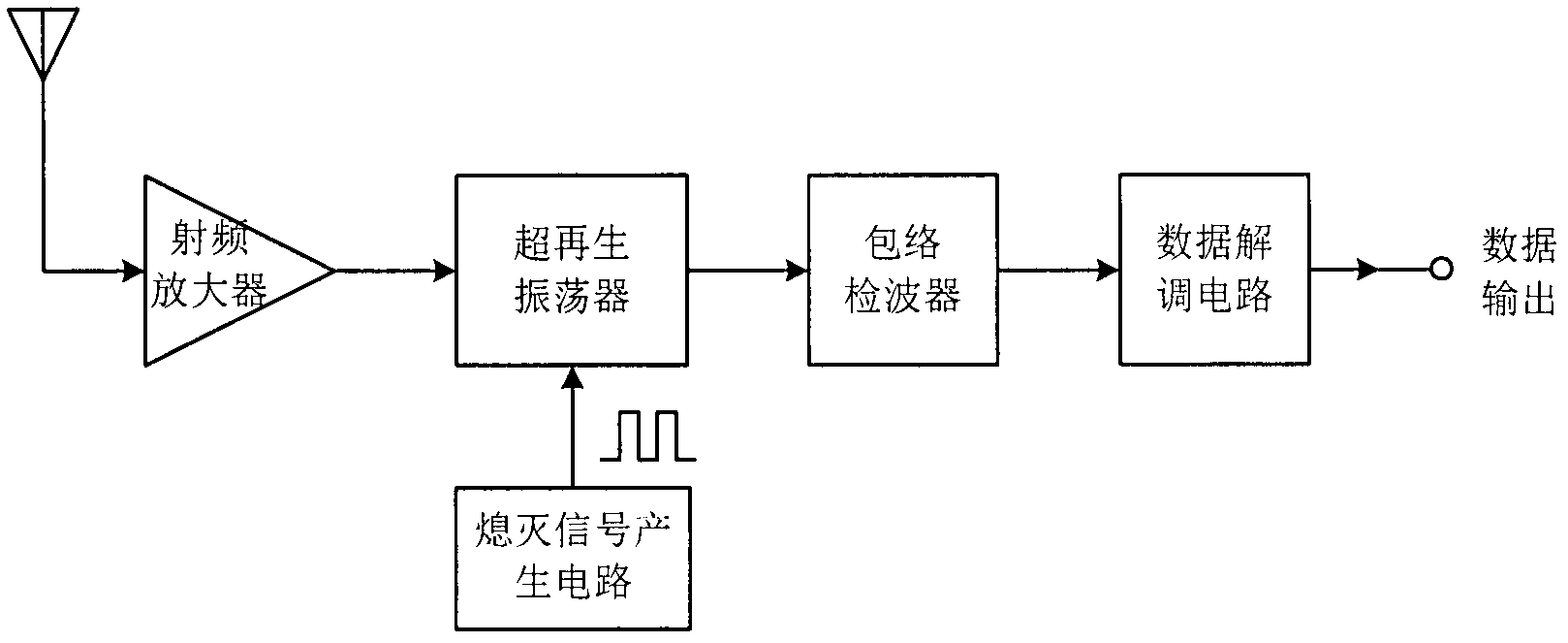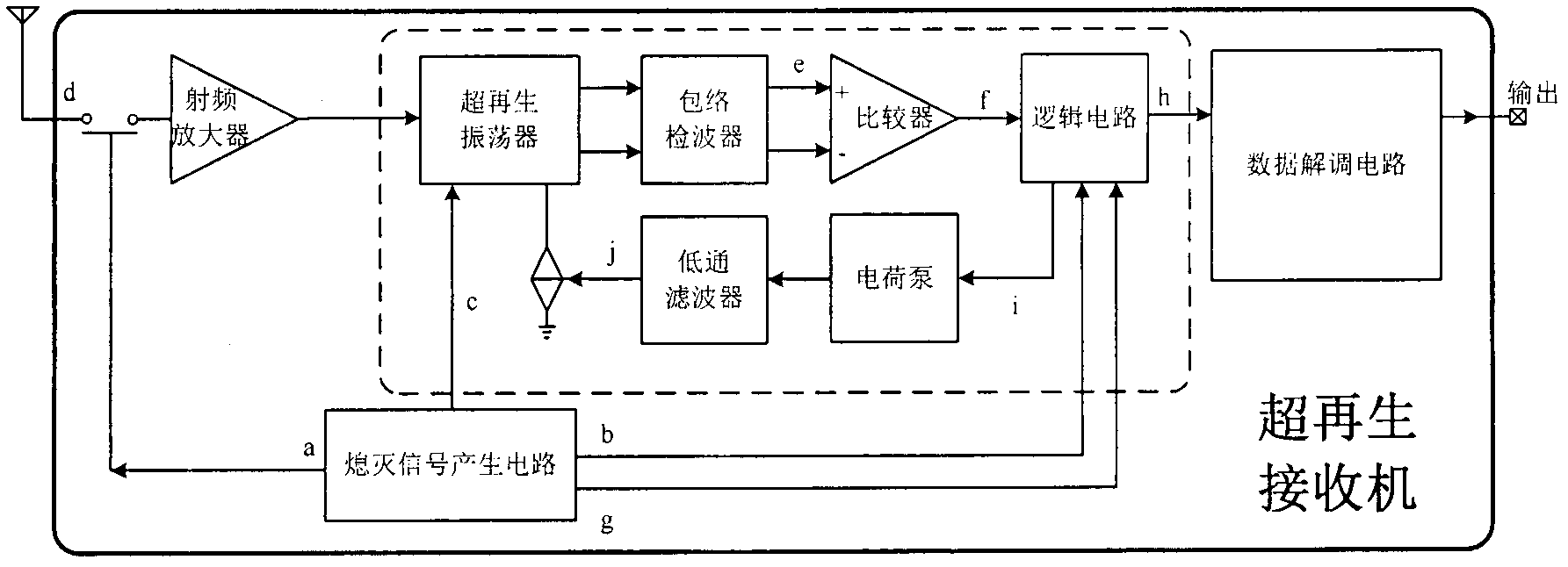Full-integration complementary metal oxide semiconductor (CMOS) super-regeneration time division multiplexing wireless receiver structure
A wireless receiver, time-division multiplexing technology, applied in the field of short-distance wireless super-regenerative receiver system architecture
- Summary
- Abstract
- Description
- Claims
- Application Information
AI Technical Summary
Problems solved by technology
Method used
Image
Examples
Embodiment Construction
[0016] Super regenerative receiver structure of the present invention such as figure 2 shown. The receiver works in a different way, and realizes the functions and performances required by the system through multiple module circuits. Including: RF amplifier, SRO with loop control function (including SRO, envelope detection circuit, comparator, logic circuit, charge pump, low-pass filter), extinguishing signal generation circuit and data demodulation circuit.
[0017] The specific circuit module realization of super regenerative receiver of the present invention will be discussed below:
[0018] 1. Design of RF Amplifier
[0019] Invented RF amplifiers such as Figure 4 shown. The circuit adopts a classic cascode structure, which has the advantages of high upper frequency limit and high reverse isolation.
[0020] Compared with the traditional active inductance, the active inductance designed by the present invention has one more resistance Rd, such as Figure 4 shown in...
PUM
 Login to View More
Login to View More Abstract
Description
Claims
Application Information
 Login to View More
Login to View More - R&D
- Intellectual Property
- Life Sciences
- Materials
- Tech Scout
- Unparalleled Data Quality
- Higher Quality Content
- 60% Fewer Hallucinations
Browse by: Latest US Patents, China's latest patents, Technical Efficacy Thesaurus, Application Domain, Technology Topic, Popular Technical Reports.
© 2025 PatSnap. All rights reserved.Legal|Privacy policy|Modern Slavery Act Transparency Statement|Sitemap|About US| Contact US: help@patsnap.com



